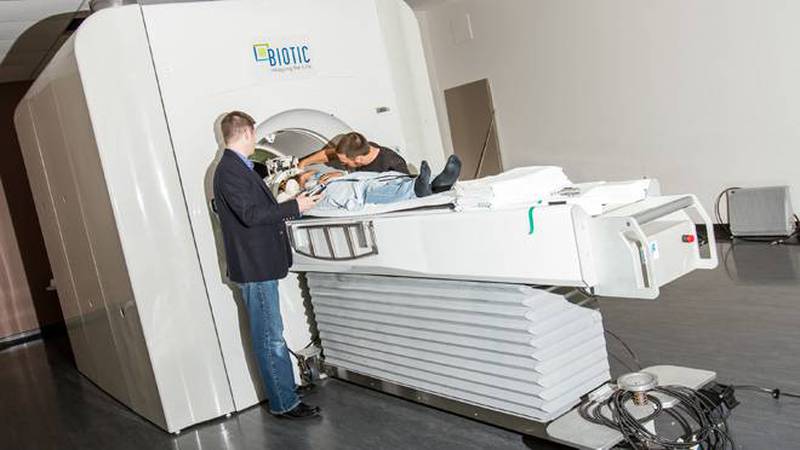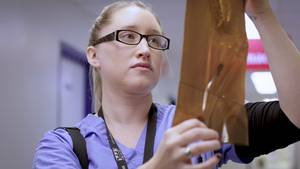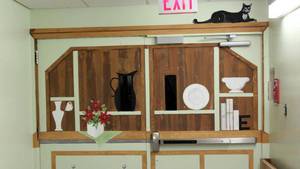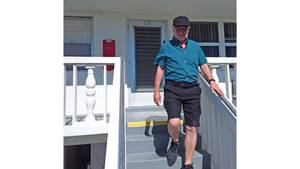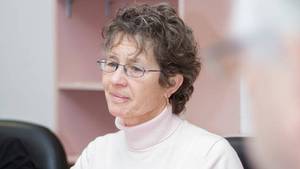When you walk through the doors of BIOTIC, it feels like you’ve walked into a blockbuster sci-fi movie. With heavy steel doors and restricted access signs plastered on the white walls, you almost expect an appearance from a Hollywood star or an alien apocalypse. But what happens behind BIOTIC’s doors is much more interesting than any of the five-star movies in theatres. At BIOTIC, you can watch a movie, featuring your very own brain, and learn more than ever before.
The QEII Health Sciences Centre’s Biomedical Translational Imaging Centre (BIOTIC) combines its cutting-edge technology and expertise to produce new information and develop new methods to help doctors and patients. The focus is on prevention, earlier detection, improved treatment and prognosis of disease.
Originally starting as a National Research Council lab 10 years ago, BIOTIC was created last April to continue its leading-edge work. With labs in the QEII Health Sciences Centre and IWK Health Centre, BIOTIC is one of the leading sources of Canadian research in magnetic resonance imaging (MRI) and magnetoencephalography (MEG):
- It has MRI with high-field strength that enables doctors to see more than they would with traditional MRI.
- Its MEG, an advanced technology related to EEG for measuring brain waves, is the most powerful in the country and the only one east of Montreal.
“We are the only site in Canada that can take the latest and greatest MEG and combine it with high-field MRI and look at what we can find when we combine these two technologies,” saysDr.Steven Beyea, BIOTIC scientific lead.
BIOTIC has a staff of 13 with a wide range of expertise, such as neuroscience, imaging physics, data analysis, software engineering, business development and project management. Team members work side-by-side with hospital doctors and clinical researchers in many areas, including neurology, cancer, orthopedics and geriatrics.
“We can help take a project right through the chain, from the earliest stages of research to the point of getting it into patient care,” says Dr. Beyea.
A BIOTIC research project at the QEII with functional MRI (fMRI) has produced world-leading information about brain functions, and doctors are already using this technology to plan brain surgeries for patients with tumours or epilepsy.
“The traditional MRI looks at the structure of the brain, but with the fMRI you’re looking at the function of the brain,” says Tynan Stevens, a Ph.D physics student who works directly with surgeons and patients in his research.
“It is going from sort of taking a picture of the brain to taking a movie, and watching what happens as the brain is engaged in certain tasks, and mapping those functions. During the scan we give the patient a task to do. It can be as simple as squeezing a hand, so then we can see what part of the brain is responding.”
Since no two brains are exactly alike, BIOTIC has the ability to get specific information about a patient long before they are in the operating room. Doctors can know exactly which critical zones, such as those affecting the ability to speak or walk, surround the area where they will operate, and plan the best surgery for that particular patient.
BIOTIC works directly with companies to take new technology from the lab and makes it available to doctors and patients, on a local and international scale. In one project, researchers from BIOTIC are working with the medical device company, Mindful Scientific, to examine a new way to diagnose concussions, using a portable scanner that quickly tests for changes in brain function following an injury.
“The Halifax Consciousness Scanner was developed here and spun off to the company,” says Denise Lalanne, BIOTIC business development manager.
So whether it’s a five-star movie in the form of a MRI or monitoring how the brain responds to simple tasks, BIOTIC harvests some of the QEII Health Sciences Centre’s greatest innovation behind its steel doors and restricted access signs.

